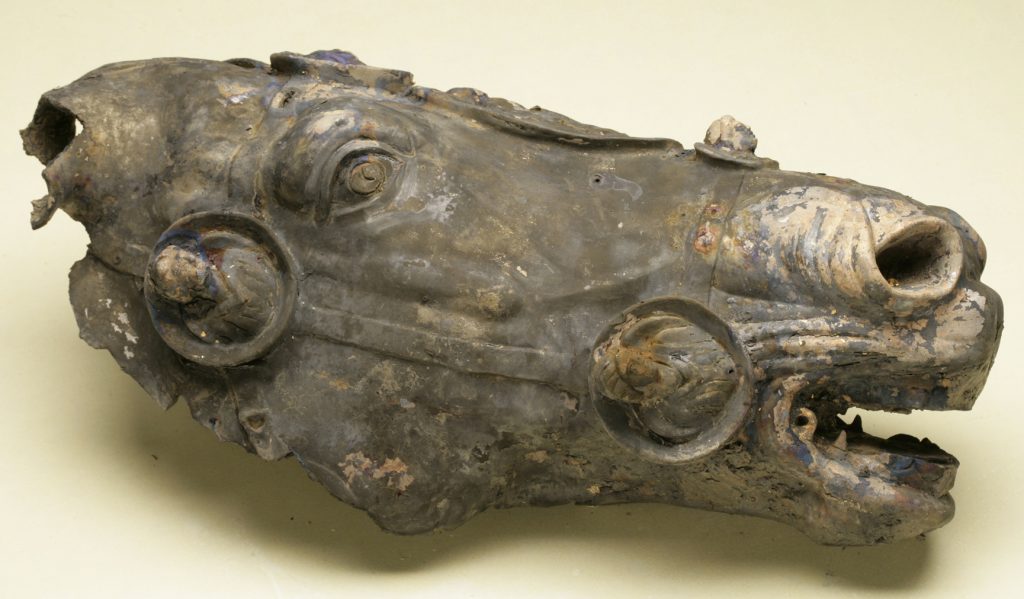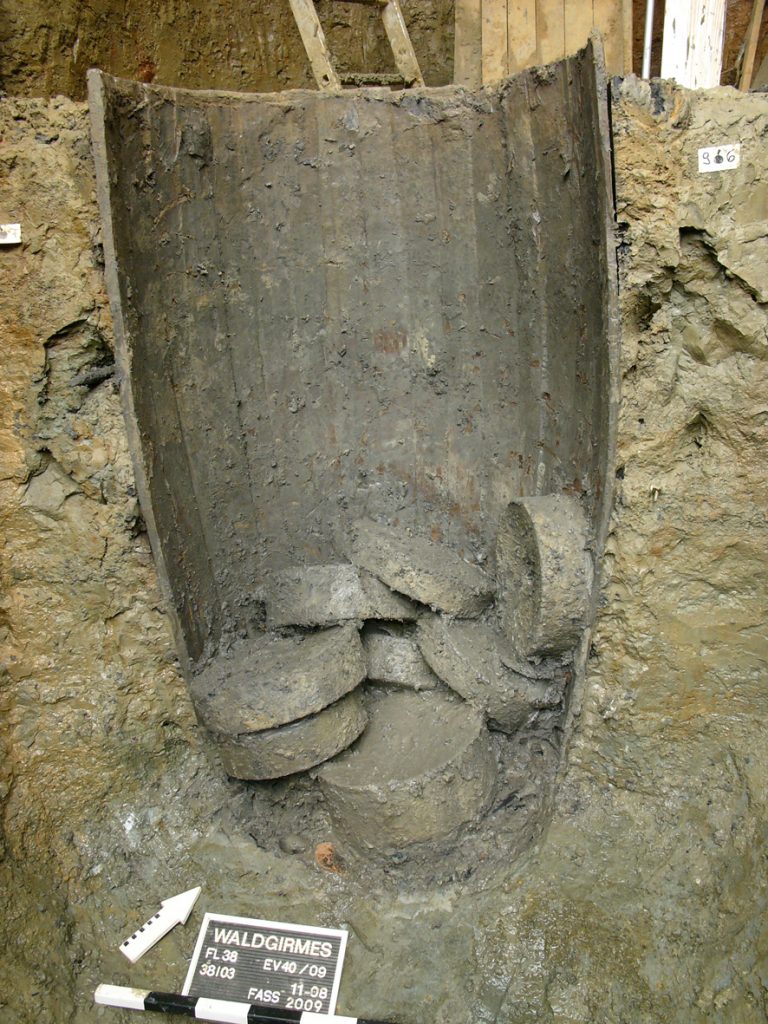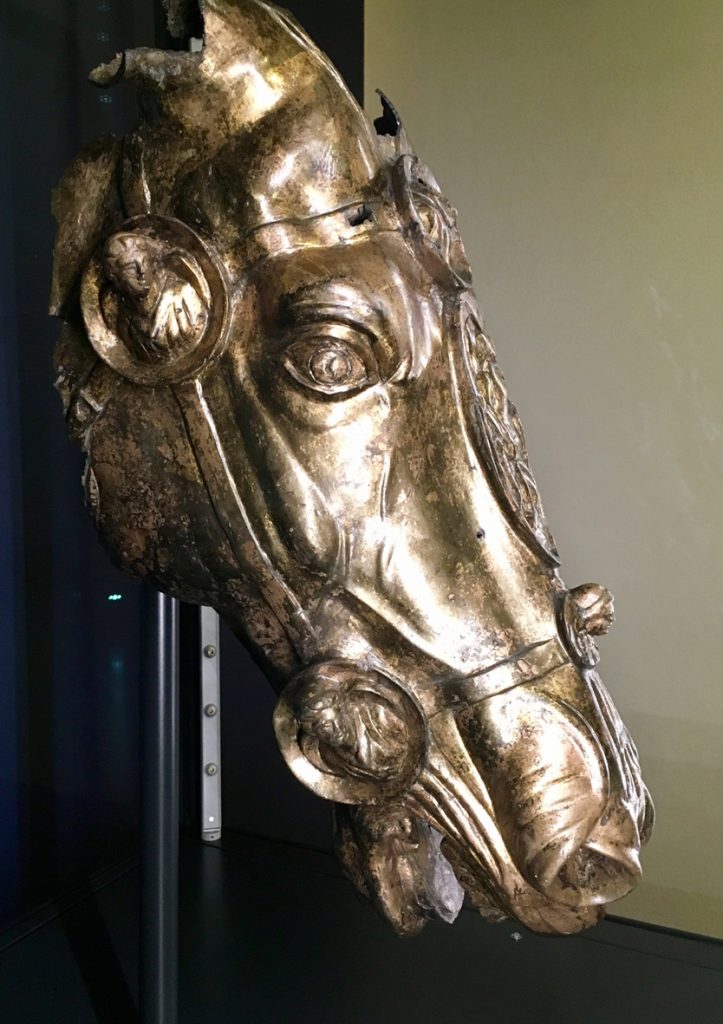Ten years ago on 10 August 2009 a team from the DAI’s Romano-Germanic Commission made an extraordinary discovery at the site of Waldgirmes near Wetzlar, a Roman settlement from around the time of Christ’s birth. A life-sized gilded horse’s head was found in a well twelve metres deep.

The bridle is richly embellished with ornamental discs. The three side medallions carry busts of the goddess Victoria in high relief. The horse’s head probably once belonged to a bronze equestrian statue of Augustus that stood in the forum of Waldgirmes. Presumably in connection with the Roman defeat in Teutoburg Forest, the statues were destroyed and partly disposed of in the well.

Barrel with millstones at the end of the well shaft (Photo: RGK) 
The carefully restored horse’s head can be admired today at a new permanent exhibition at the Roman fort of Saalburg in Hesse (Photo: Nicole Kehrer, DAI)
The Romano-Germanic Commission collaborated with the archaeological department of the federal state of Hesse in a project researching the civil Roman settlement of Waldgirmes from 1993 to 2009. Previously only Roman military bases were known in Germania to the east of the Rhine, even though classical authors like Tacitus and Cassius Dio describe a more differentiated political situation on the eve of the Battle of Teutoburg Forest (AD 9). At the site of Waldgirmes in Hesse, the archaeologists found the first evidence substantiating those reports. They unearthed the remains of a Roman forum and the foundations of Roman houses as well as indigenous buildings. In the 2,000 sq. m. forum, five foundation pits for statues came to light in the central square. Small fragments of at least three statues were found at different spots in the excavated area.